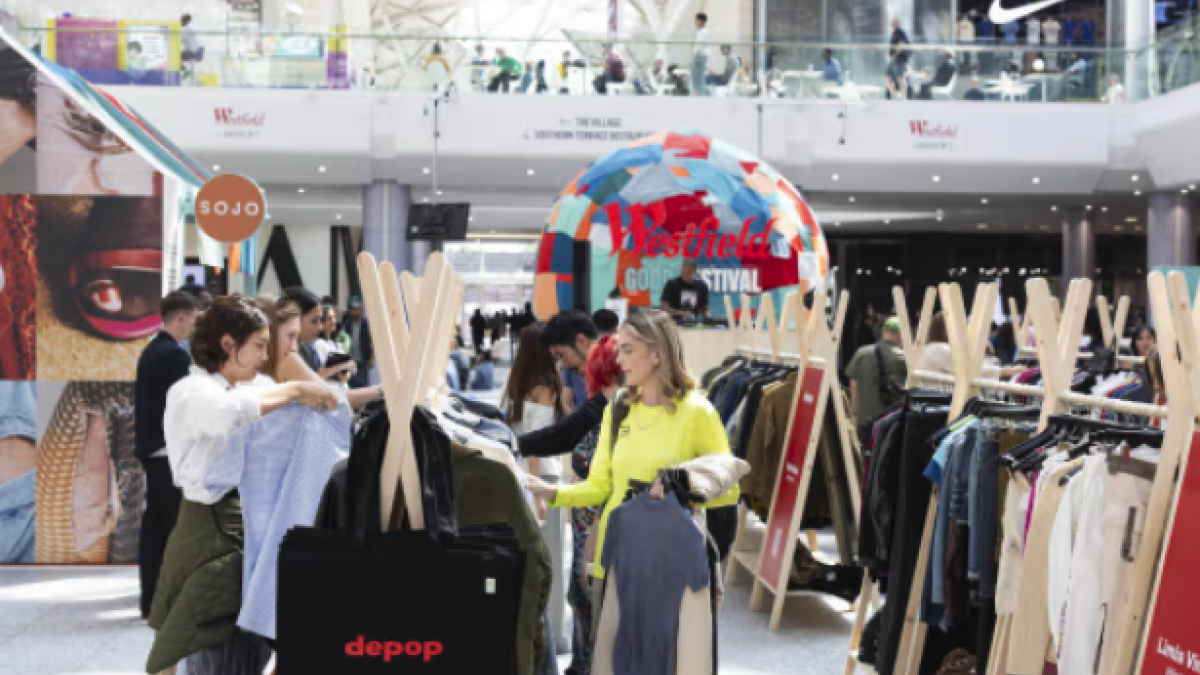Bipartisan Legislators Want More People to Shop Secondhand

In the age of Shein and the fast-fashion haul, lawmakers on both sides of the aisle are trying on a more sustainable option.
Sydney Kamlager-Dove (D., Calif.) and Nicole Malliotakis (R., N.Y.) are set to launch a new caucus on Wednesday aiming to promote the re-commerce economy, looking in part to help platforms like eBay, Etsy and Depop where consumers can buy and sell pre-owned items—often at hefty discounts. Among the U.S. representatives joining the caucus are Kevin Mullin (D., Calif.), Hillary Scholten (D., Mich.) and Brittany Pettersen (D., Colo.).
The bipartisan initiative will back policies that extend the life cycle of a product, cut down on landfill waste and “encourage environmentally responsible commerce.” It will also aim to support small sellers on digital platforms and promote access to apps like Poshmark and OfferUp.
Kamlager-Dove said she hopes to focus in part on reducing sales tax on secondhand items and providing tax credits for companies adopting circular business models.
“Why not do something that’s good for fashion, good for the economy and good for the environment?” she said.
For Malliotakis, one of the biggest concerns is tackling tax burdens for small businesses and resellers as well as fighting counterfeits, with the added benefit of cutting waste.
“It’s sustainable, it helps the environment, there’s less trash and you make somebody else happy,” she said.
The push comes as an onslaught of tariffs hit products and materials shipping into the country, sending retailers’ supply chains into disarray but also focusing U.S. shoppers’ minds on where their goods come from. A report from ThredUp found 54% of retail executives believe resale is a more stable source of clothing amid tariff turmoil.
“At a time when consumers are price-sensitive and seeking more affordable, sustainable options, re-commerce offers critical access—not only to income, but to quality goods at lower costs,” said Rachel Kibbe, founder and CEO of American Circular Textiles.
Across the U.S., landfills are bloated with clothing waste that as it breaks down releases a range of harmful chemicals, including greenhouse gases and per- and polyfluoroalkyl substances, known as “forever chemicals.”
But producing new items has an even higher carbon cost when their life cycle is factored in: material sourcing, manufacturing—often in countries such as China or Indonesia—and transportation.
“Currently we have enough clothing on the planet to clothe the next six generations of humans without making anything more,” said Rachel Mednick, an instructor on the fashion industry at Drexel University and co-founder of Pennsylvania Fibershed, a nonprofit aimed at creating sustainable and circular textiles.
Companies need to be able to more easily source natural fibers like linen, wool and hemp when producing new garments, Mednick said. “Supply chains are extremely complicated, especially for global brands, and it takes time and resources to shift and create change,” she added.
The environmental damage in buying new items is stark: A scorecard by advocacy group Stand.earth found over 40% of brands it analyzed had increased their carbon footprint in 2025. Absolute emissions at Shein, where sneakers and sandals can go for less than $10, rocketed by over 170% in just two years, the report said.
“We recognize that we are still early in our decarbonization journey and have much work to do to scale our decarbonization initiatives in order to meet our targets,” Shein said in a statement.
But secondhand shopping has also acquired a retro chic, with younger consumers scouring online apps (as well as thrift and vintage stores) for one-of-a-kind items that cost less and are easier on the environment.
“We’re seeing a lot of interest from Gen Z and Millennials in prioritizing re-commerce and sustainability in how they shop,” said Ashley Shillingsburg, head of government relations for eBay.
Indeed, consumers between the ages of 25 and 34 were most likely to have bought “pre-loved goods” over the last year, with 71% of those surveyed having done so, according to a report from eBay. The online bazaar is looking to draw in more of those young shoppers: It recently launched an ad campaign with YouTube star Emma Chamberlain.
The resell sector is expected to reach $1.04 trillion globally by 2035, up from $186 billion last year, according to Transparency Market Research, spanning everything from fashion to electronics, furniture and cars. The luxury market is also seeing a drastic shift. About 27% spent online on luxury apparel was at fashion resellers last year, according to a report from Mastercard.
Some large retailers are also dipping into the secondhand market. REI, Lululemon—even Shein—have sections on their websites where you can buy preowned items from their brand.
“For us, this is about extending the life of clothes, empowering a new generation of creative entrepreneurs and connecting a global community that is reshaping fashion,” said Peter Semple, Depop’s interim CEO. “By advocating for policies that grow resale culture, we’re not only making desirable secondhand fashion more accessible, we’re also unlocking economic opportunities.”